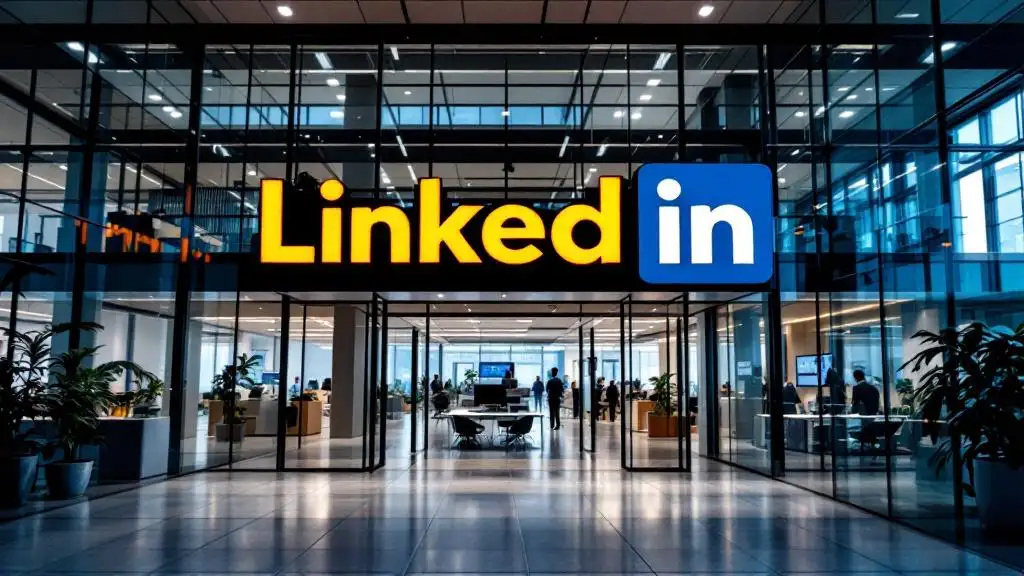The Key to Success: Nursing Home Marketing Statistics Uncovered
When it comes to healthcare marketing, understanding the relevant statistics can help nursing homes develop effective strategies to reach their target audience.


The Key to Success: Nursing Home Marketing Statistics Uncovered
Understanding Healthcare Marketing Statistics
When it comes to healthcare marketing, understanding the relevant statistics can help nursing homes develop effective strategies to reach their target audience. In this section, we will explore the importance of customer journey cohesion, the effectiveness of print advertising, and the significance of local SEO.
Importance of Customer Journey Cohesion
According to recent research, 86% of senior-level marketers believe that creating a cohesive customer journey across all touchpoints and channels is crucial. This means that nursing homes should strive to provide a seamless experience for potential residents and their families, from the initial point of contact to the final decision-making stage.
By adopting a multi-channel marketing approach, nursing homes can ensure that their brand is consistently present in front of the target audience, regardless of the medium they consume. This holistic experience helps to build trust and familiarity, increasing the likelihood of conversion.
Effectiveness of Print Advertising
While digital marketing has gained significant traction, print advertising remains an effective strategy for nursing homes. Nielsen reports that print advertising still contributes the most to customer engagement. This is particularly relevant for nursing home audiences, as Baby Boomers read an average of 9.2 magazines per month and Gen Xers read 9.1 magazines.
Print advertising allows nursing homes to reach their target demographic directly, as many older adults continue to rely on traditional print media for information and entertainment. By strategically placing advertisements in relevant publications, nursing homes can effectively engage with their audience and generate leads.
Significance of Local SEO
In the digital age, having a strong online presence is essential for nursing homes. A significant number of adult internet users (83%) search online for health information, making local search engine optimization (SEO) a crucial strategy for nursing homes [1]. By optimizing their website and online content for local search queries, nursing homes can ensure that they appear prominently in search engine results.
Local SEO helps nursing homes acquire residents and customers by increasing their visibility in local search results. This strategy involves optimizing website content, creating local listings, and managing online reviews. By employing effective local SEO techniques, nursing homes can enhance their online visibility and attract individuals seeking long-term care options in their specific geographic area.
Understanding these healthcare marketing statistics is key for nursing homes to develop successful marketing strategies. By focusing on customer journey cohesion, leveraging the effectiveness of print advertising, and prioritizing local SEO efforts, nursing homes can effectively reach and engage with their target audience.
Read about: What is Nursing Home SEO?
Digital Strategies for Healthcare Marketing
In the ever-evolving landscape of healthcare marketing, digital strategies have become essential for reaching and engaging with potential customers. This section explores three key digital strategies that can effectively promote nursing home facilities: pay per click advertising (PPC), leveraging social media, and incorporating virtual tours.
Pay Per Click Advertising
Pay per click advertising is a digital advertising strategy that aims to attract customers through paid online clicks. Facilities can utilize platforms like Google AdWords to guarantee their appearance within top search results, increasing their visibility to potential customers. Compared to traditional TV and media advertising, PPC advertising offers a high return on investment (ROI).
By choosing specific keywords and phrases relevant to nursing home services, facilities can target their ads to individuals actively searching for such services. This targeted approach ensures that the right audience is reached and increases the chances of conversions. Additionally, PPC advertising provides valuable data and analytics that can inform marketing strategies and optimize future campaigns.
Leveraging Social Media
With approximately 3.8 billion users as of January 2020, social media has emerged as a powerful platform for marketing nursing home facilities. Paid advertising platforms on social media, when properly utilized, can help spread brand awareness and grow businesses in the nursing home sector.
Social media platforms like Facebook, Instagram, and Twitter provide opportunities to engage with potential customers through targeted advertisements, informative posts, and interactive content. Facilities can showcase their services, highlight testimonials from satisfied residents and their families, and build a community by sharing relevant and helpful information. Effective social media marketing can foster trust and establish a positive reputation for nursing home facilities.
Incorporating Virtual Tours
Providing virtual tours of nursing home facilities can significantly assist in showcasing the environment and amenities to potential residents. Virtual tours offer a convenient way for individuals and their families to explore the facility from the comfort of their own homes. This visual representation helps build trust, provides transparency, and makes it easier to convert leads into customers.
By incorporating virtual tours on their websites or through video sharing platforms, nursing homes can offer an immersive experience that allows viewers to navigate through different areas, view rooms, and learn about the available services. This digital strategy provides a unique opportunity to showcase the facility's features, amenities, and the level of care provided, ultimately helping potential residents and their families make informed decisions.
Digital strategies like pay per click advertising, leveraging social media, and incorporating virtual tours have proven to be effective in marketing nursing home facilities. By utilizing these strategies, nursing homes can increase their online presence, engage with their target audience, and ultimately attract potential residents and their families.
Trends Impacting Nursing Home Marketing
In the realm of nursing home marketing, several trends are impacting the strategies and approaches taken by healthcare providers. Two significant trends to consider are the decline in nursing home bed supply and the increase in marketing budgets.
Decline in Nursing Home Bed Supply
The supply of nursing home beds has been on a decline in many areas across the United States. From 2011 to 2019, 86.4% of US counties experienced a decline in nursing home bed supply per 10,000 adults aged 65 years or older. On average, there was a decrease of 129.9 beds from the 2011 count of 552.5 beds per 10,000 adults aged 65 years or older.
This decline in nursing home bed supply is attributed to state and federal policy initiatives that aim to rebalance long-term services and supports away from institutional care and towards home- and community-based settings. While these initiatives align with the preference of many seniors to age in place, the reduction in nursing home bed supply may pose challenges for individuals in need of post-acute care after hospitalization [4]. It is crucial for nursing home marketing strategies to adapt to this changing landscape and explore alternative ways to provide care and support.
Increase in Marketing Budgets
Despite the decline in nursing home bed supply, marketing budgets for senior living operators have been on the rise. Non-profit senior living operators, on average, are allocating 4.86% of their operating budget to marketing in 2022, which marks an increase from 3.9% in 2015. Single-site operators have reported spending 4.22% of their operating budget on marketing in 2022, compared to 3.4% in 2015. Multi-site operators, on the other hand, have increased their marketing budget to 6.3% in 2022, up from 4.7% in 2015.
This increase in marketing budgets reflects the growing recognition of the importance of effective marketing strategies in the highly competitive healthcare landscape. As more senior living operators shift to digital marketing, investing in marketing initiatives becomes crucial to reach their target audience and stand out from the competition. It is essential for nursing homes to allocate adequate resources to marketing efforts, ensuring that they can connect with potential residents and their families effectively.
By understanding these trends impacting nursing home marketing, healthcare providers can adapt their strategies to navigate the changing landscape and effectively reach their target audience. Adapting to the decline in nursing home bed supply and allocating sufficient marketing budgets can help nursing homes stay competitive and provide the necessary care for the aging population.
Sales and Marketing Tactics
To drive success in nursing home marketing, implementing effective sales and marketing tactics is essential. By employing strategies that prioritize user experience, track return on investment (ROI) and reviews, and utilize sales training and customer relationship management (CRM) systems, nursing homes can enhance their marketing efforts.
User-Friendly Websites
Creating a user-friendly website is paramount in attracting and engaging potential residents. A website that is easy to navigate, visually appealing, and provides relevant information can significantly impact the decision-making process. By optimizing the website's design and functionality, nursing homes can enhance the user experience and build trust with prospective residents and their families.
Tracking ROI and Reviews
Measuring the return on investment (ROI) of marketing initiatives and monitoring online reviews are crucial for nursing home marketing success. By tracking the performance of different marketing channels and campaigns, nursing homes can allocate resources effectively and optimize their strategies. Additionally, monitoring online reviews allows nursing homes to address concerns promptly, highlight positive experiences, and maintain a positive reputation.
Sales Training and CRM Systems
Providing formal sales training to all sales personnel is vital in improving occupancy rates. By equipping sales staff with the necessary skills and knowledge, nursing homes can effectively engage with prospective residents and address their specific needs. Additionally, utilizing CRM systems allows nursing homes to track and manage leads, ensuring that no potential resident falls through the cracks. These systems enable efficient communication, personalized follow-ups, and effective sales pipeline management.
It is crucial for nursing homes to differentiate their sales and marketing tactics and synchronize them to provide potential residents with a positive and consistent message about the benefits of the community. By implementing user-friendly websites, tracking ROI and reviews, and utilizing sales training and CRM systems, nursing homes can enhance their marketing efforts and improve their overall occupancy rates.
References
[1]: https://unnus.com/medical/nursing-home-marketing/
[2]: https://www.mcknights.com/marketplace/tips-to-market-your-skilled-nursing-home-facility/
[3]: https://www.ncbi.nlm.nih.gov/pmc/articles/PMC9978943/
[4]: https://jamanetwork.com/journals/jamanetworkopen/fullarticle/2801837
[5]: https://seniorhousingnews.com/2022/06/16/non-profit-operators-set-higher-marketing-budgets-as-shift-to-digital-takes-hold/
[6]: https://www.plantemoran.com/explore-our-thinking/insight/2017/affiliates/plante-moran-living-forward/10-marketing-and-sales-tactics-to-improve-senior-living-occupancy







